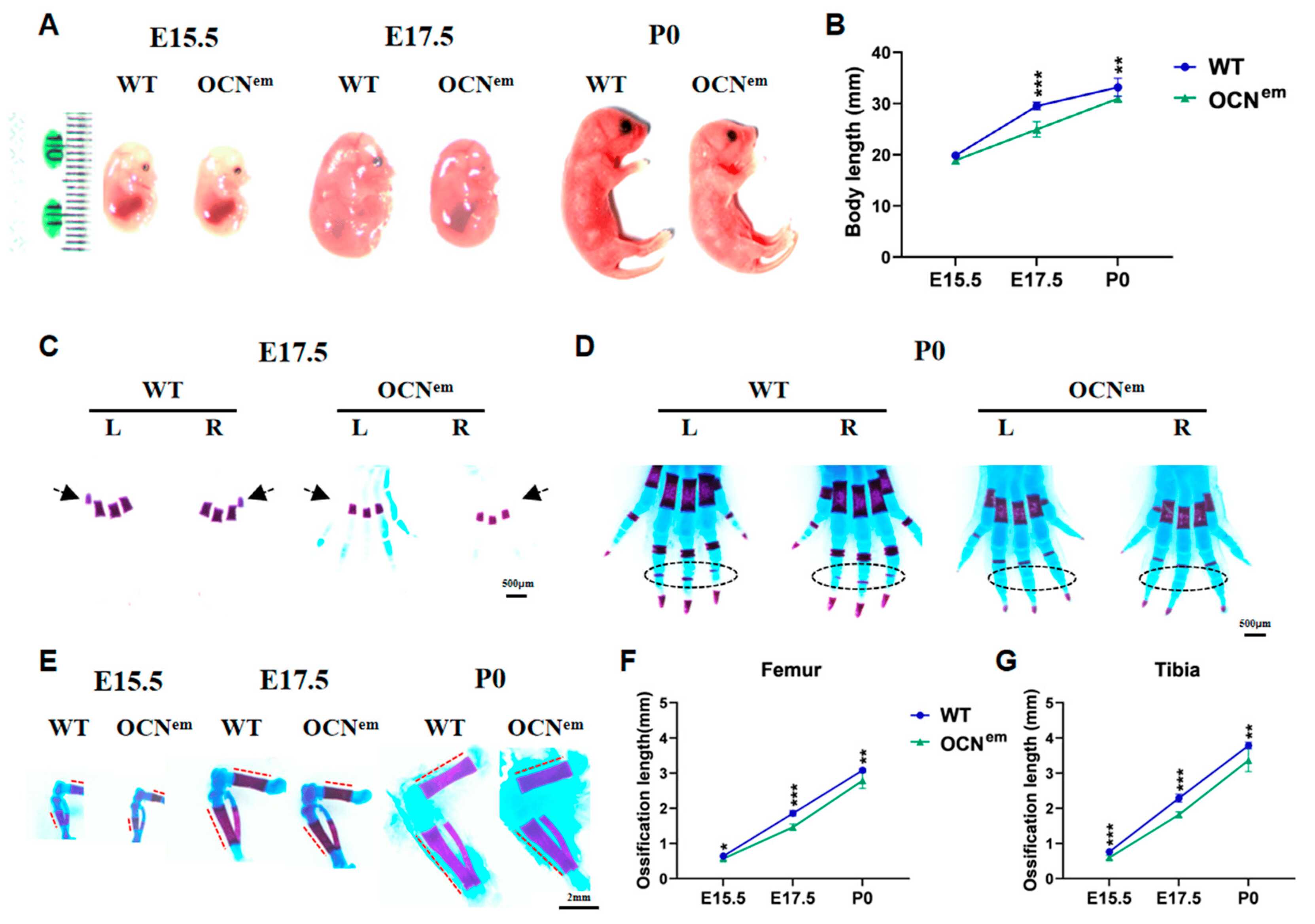Researchers Discover Novel Role of Osteocalcin on Soft Bone Development
Date:31-10-2024 | 【Print】 【close】
Researchers led by Prof. REN Peigen from the Shenzhen Institutes of Advanced Technology (SIAT) of Chinese Academy of Sciences, along with their collaborators, have discovered that the well-known bone matrix protein Osteocalcin (OCN) can regulate chondrocyte differentiation and endochondral ossification, which supplies new information to explain the complicated, and ambiguous role of osteocalcin in bone turn-over.
The study was published in International Journal of Molecular Sciences on Sept.15
During bone development and fracture healing, endochondral ossification is a complex and critical process where a cartilage template is transformed into bone. OCN, the most abundant non-collagenous protein in the bone matrix, has long been used as osteogenesis biomarker in orthopaedic studies. However, the role and mechanism of OCN in chondrocyte differentiation and endochondral ossification remain unclear.
In this study, researchers used the CRISPR/Cas9-mediated bglap–bglap2 deficiency (OCNem) mouse model to explore OCN’ role in chondrocyte differentiation and endochondral ossification, including the formation of primary and secondary ossification centers as well as the growth plate during embryonic, neonatal, and adolescent stages.
Experimental results showed that OCNem mice exhibited significant delays in the development of primary and secondary ossification centers compared to wild-type mice, along with increased cartilage length in growth plates and hypertrophic zones during neonatal and adolescent stages. These findings indicated that OCN deficiency disturbed endochondral ossification during embryonic and postnatal development.
Furthermore, researchers found that OCN deficiency leads to increased chondrocyte differentiation and delayed vascularization, impeding the progression of endochondral ossification. RNA sequencing and bioinformatics analysis revealed a notable increase in the chondrogenic potential of bone marrow mesenchymal stem cells (BMSCs) when OCN is absent. OCN deficiency appears to redirect the developmental pathway of BMSCs, favoring chondrogenic differentiation over osteogenic differentiation.
Moreover, transcriptional network analysis showed that BMP and TGF-β signaling pathways were highly affected in OCNem BMSCs, which is closely associated with cartilage development and maintenance.
“Our study demonstrates a previously unknown regulatory function of OCN in cartilage ossification,” said Prof. REN. “The delayed endochondral ossification in OCNem mice, due to increased chondrocyte differentiation and cartilage formation, may serve as a potential regulatory and drug target for osteoarthritis via the BMP7 pathway”.
This study may open new avenues for future research and potential therapeutic interventions targeting OCN in conditions with abnormal cartilage diseases.

CRISPR/Cas9-mediated bglap–bglap2 deficiency (OCNem) mice delayed development of early endochondral ossification and shortened primary ossification center (POC) in embryonic period. (Image by SIAT)
Media Contact: LU Qun
Email: qun.lu@siat.ac.cn
Download the attachment: